Ski boots flex is een belangrijke factor in hoe je schoenen presteren op de piste. Het bepaalt hoe stijf of flexibel ze zijn als je naar voren leunt, wat invloed heeft op controle, comfort en krachtsoverdracht. Flex ratings variëren meestal van 60 (zacht) tot 140+ (stijf), maar er is geen universele standaard - dus een "100-flex" schoen kan per merk anders aanvoelen.
Dit is wat je moet weten:
- Beginners: Zachtere schoenen (60-80 flex) zijn makkelijker te beheersen en vergevingsgezinder.
- Gevorderde skiërs: Matige flex (80-100) balanceert comfort en responsiviteit.
- Gevorderde skiërs: Stijvere schoenen (100+) bieden precisie en kracht voor agressief skiën.
- Korte ski-uitrusting (zoals Snowfeet®): Werkt het beste met zachte tot matige flex (70-100) voor snelle bochten en controle.
Korte ski's, zoals Snowfeet® Mini Ski Skates, vereisen precieze bewegingen maar hebben geen stijve schoenen nodig zoals langere ski's. Ze zijn compatibel met gewone winterlaarzen, waardoor ze toegankelijker en betaalbaarder zijn. Bij het kiezen van ski boots moet je rekening houden met je vaardigheidsniveau, gewicht, skistijl en het terrein dat je gaat aanpakken. Een goede pasvorm en de juiste flex kunnen het verschil maken op de piste.
Begrip van Flex Ratings en Hun Effecten
De Ski Boot Flex Rating Schaal
Ski boots flex ratings kunnen worden ingedeeld in vier categorieën, elk gericht op verschillende vaardigheidsniveaus en skistijlen. Zachte flex-schoenen (60–80) zijn perfect voor beginners of recreatieve skiërs die comfort belangrijker vinden dan hoge prestaties. Een stapje hoger, moderate flex-schoenen (rond 80–100) bieden een balans, met voldoende responsiviteit voor gevorderde skiërs zonder te veeleisend te zijn.
Voor gevorderde skiërs zijn stijve flex-schoenen (100–120) de favoriete optie, die zorgen voor precieze krachtsoverdracht en controle voor agressiever skiën. Ten slotte zijn zeer stijve schoenen (120 en hoger) afgestemd op expert-racers en ervaren skiërs die maximale prestaties nodig hebben en bereid zijn de extra fysieke inspanning te leveren die ze vereisen.
Het is goed om te weten dat deze ratings niet universeel zijn. Merken zoals Atomic, Head en Nordica interpreteren flex-ratings iets anders, wat voor variatie kan zorgen. Snowfeet* producten zijn echter ontworpen met een andere aanpak. Omdat ze gecombineerd worden met kortere, meer vergevingsgezinde uitrusting - in tegenstelling tot traditionele 170 cm (67 in) ski's die stijvere schoenen vereisen - zijn hun prestaties minder afhankelijk van ultra-precieze flex-ratings. Dit maakt ze een uitstekende keuze voor skiërs die op zoek zijn naar een speelsere en meer aanpasbare ervaring.
Hoe flex de prestaties beïnvloedt
De flex-rating van je skischoenen speelt een grote rol in hoe ze presteren op de piste. Stijvere schoenen bieden precise controle en snelle responsiviteit, wat de reden is dat racers ze waarderen. Maar er is een keerzijde: ze zijn minder vergevingsgezind en kunnen oncomfortabel aanvoelen tijdens lange sessies.
Zachtere schoenen bieden daarentegen meer vergevingsgezindheid en comfort, wat vooral handig is als je techniek niet perfect is of je langere tijd skiet. Voor Snowfeet*-gebruikers is deze zachtere flex een pluspunt. Omdat Snowfeet* uitrusting vertrouwt op snelle, scherpe bewegingen in plaats van lange, vloeiende bochten, maakt de extra flexibiliteit het makkelijker om aan te passen en vermindert het vermoeidheid.
Een andere factor om rekening mee te houden is de temperatuur. Met de actieve stijl die wordt aangemoedigd door korte ski-uitrusting, warmen je schoenen sneller op, wat hun flex gedurende de dag kan verzachten. Een schoen die 's ochtends stijf aanvoelt, kan naarmate de dag vordert comfortabeler worden, wat een mooie balans biedt tussen ondersteuning en flexibiliteit. Dit wordt nog duidelijker in combinatie met korte ski-uitrusting.
Flex-ratings voor korte ski's en Skiskates
Als het gaat om Snowfeet* Mini Ski Skates en Skiblades, verandert het spel. Deze compacte ontwerpen werken het beste met schoenen die een matige tot zachte flex-rating hebben (70–100). Waarom? Hun kortere lengte maakt snelle kant-tot-kant overgangen en zeer responsieve bochten mogelijk, wat zachtere schoenen beter aankunnen.
Een schoen die te stijf is, kan juist tegen je werken en de snelle aanpassingen beperken die Snowfeet* uitrusting zo leuk maken. Zie het als het vergelijken van een Formule 1-auto met een go-kart - beide zijn snel, maar de go-kart blinkt uit in wendbaarheid en snelle besturing. Snowfeet* uitrusting draait helemaal om die speelse, behendige prestaties.
Bijvoorbeeld, Snowfeet* Skiskates, die slechts 44 cm (17 inch) lang zijn, komen tot hun recht in combinatie met schoenen met een flexwaarde van 70–100. Hun ontwerp geeft prioriteit aan wendbaarheid en plezier boven pure kracht, waardoor ze ideaal zijn voor het pakken van parkfeatures, het slalommen tussen bomen of het cruisen over geprepareerde pistes. Een schoen met een flexwaarde rond 90 biedt de juiste mix van ondersteuning en flexibiliteit, waardoor je het vertrouwen hebt om gevarieerd terrein aan te pakken terwijl je licht op je voeten blijft.
Hoe kies je de juiste flex voor skischoenen
Factoren die de flexkeuze beïnvloeden
Bij het kiezen van de juiste flex voor skischoenen spelen een paar belangrijke factoren een rol. Je lichaamsgewicht, skistijl en beenkracht zijn de belangrijkste. Zwaardere skiërs of degenen met een agressievere stijl geven vaak de voorkeur aan stijvere schoenen, terwijl lichtere skiërs of degenen die een meer ontspannen aanpak hebben, neigen naar zachtere schoenen. Temperatuur speelt ook een rol - koud weer kan schoenen stijver laten aanvoelen, terwijl warmere omstandigheden ze juist zachter maken. Als je de poeder in gaat, kunnen zachtere schoenen je helpen soepelere, beter gecontroleerde bewegingen te maken. Aan de andere kant vragen ijzige hellingen om stijvere schoenen om je de grip te geven die je nodig hebt.
Flexaanbevelingen per vaardigheidsniveau
Flexwaarden zijn meestal gekoppeld aan je ervaringsniveau:
- Beginners: Zoek naar een flexwaarde in het bereik van 60–80. Deze schoenen zijn zachter en vergevingsgezinder, waardoor ze gemakkelijker te beheersen zijn.
- Gemiddelde skiërs: Een flexwaarde van 80–100 biedt een mooie balans tussen comfort en prestaties.
- Gevorderde skiërs: Je wilt iets in het bereik van 100–120+ voor maximale responsiviteit en precisie.
Houd er rekening mee dat flexwaarden kunnen verschillen tussen heren- en damesschoenen. Bijvoorbeeld, een damesschoen met een flex van 90 voelt vaak vergelijkbaar aan met een herenschoen met een flex van 80 vanwege ontwerpverschillen.
Compatibiliteit met Snowfeet* Producten
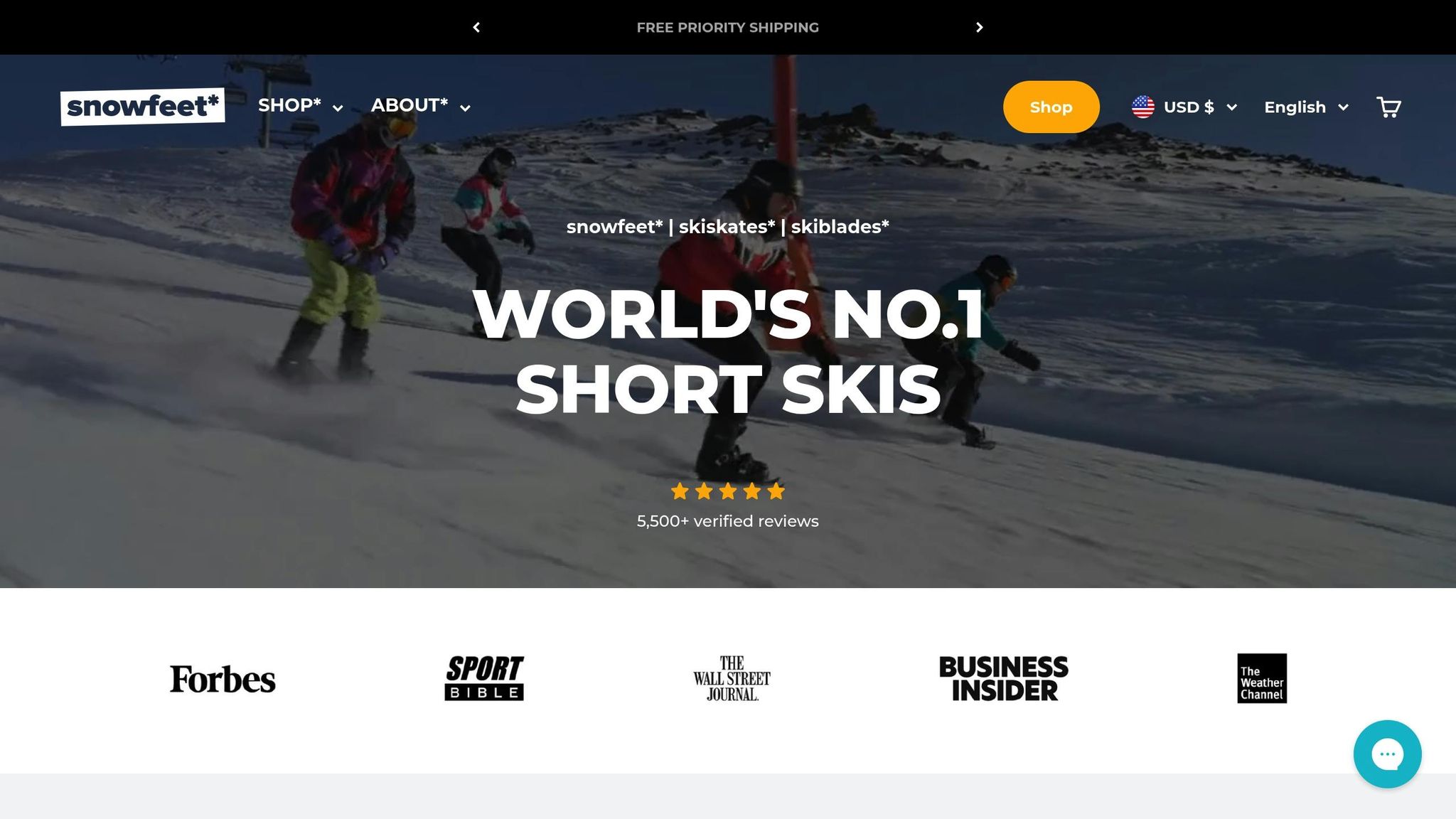
Zodra je je persoonlijke behoeften en vaardigheidsniveau hebt overwogen, is het tijd om na te denken over hoe je schoenen passen bij je uitrusting. Snowfeet* producten zijn ontworpen om te werken met een breed scala aan flexwaarden, waardoor ze een geweldige keuze zijn voor groepen met verschillende niveaus of iedereen die nieuwe ski-stijlen wil uitproberen zonder zich te binden aan gespecialiseerde uitrusting.
Snowfeet* Mini Ski Skates zijn bijzonder veelzijdig en werken goed met schoenen die een flexwaarde tussen 70 en 110 hebben. Deze skates zijn compatibel met gewone winterlaarzen, snowboardlaarzen of skischoenen, dus je zit niet vast aan één setup.
De 44 cm Skiskates presteren het beste met schoenen met een matige flex in het bereik van 80–100. Dat gezegd hebbende, zijn ze vergevingsgezind genoeg voor beginners met zachtere schoenen en gevorderde skiërs die de voorkeur geven aan stijvere. Deze flexibiliteit staat in contrast met traditionele lange ski's, die vaak een preciezere schoen-ski match vereisen.
Voor nog meer opties, bekijk Snowfeet* Skiblades, die verkrijgbaar zijn in lengtes van 65 cm en 99 cm. Of je nu de hele dag cruiset op een 85-flex schoen of agressieve afdalingen maakt op een 110-flex schoen, deze skiblades passen zich aan jouw stijl aan. Ze zijn ontworpen om met jouw uitrusting te werken, niet om je schoenen aan te passen.
Nog een voordeel? Snowfeet* uitrusting kan je geld besparen. In plaats van verschillende schoenen nodig te hebben voor diverse skistijlen, kun je één paar gebruiken voor meerdere activiteiten. Dit is vooral handig voor gezinnen of groepen die apparatuur willen delen of voor individuen die verschillende skistijlen willen verkennen zonder de bank te breken.
Vergelijking van Snowfeet* met lange ski- en snowboardlaarzen
Belangrijkste verschillen in schoencompatibiliteit
Traditionele ski- en snowboarduitrusting komt vaak met een nadeel: je hebt gespecialiseerde schoenen nodig. Dit verhoogt niet alleen de kosten, maar beperkt ook je opties. Snowfeet* gear draait het om door te werken met de winterlaarzen die je al hebt - of het nu je vertrouwde wandelschoenen, alledaagse sneeuwlaarzen of gewone winterkleding zijn.
Bovendien zijn Snowfeet* producten ontworpen om cross-compatibel te zijn. Dat betekent dat hetzelfde paar schoenen kan werken met hun verschillende producten, zoals Mini Ski Skates, Skiskates of Skiblades. Deze flexibiliteit maakt het makkelijker (en goedkoper) om over te stappen van traditionele uitrusting naar de wendbare, leuke ervaring die Snowfeet* biedt.
Vergelijking van prestaties en leercurve
Het punt met lange ski's is dit: ze kunnen lastig zijn, vooral voor beginners. Hun grootte en ontwerp vragen om kracht en techniek, wat het leerproces traag en, laten we eerlijk zijn, een beetje frustrerend kan maken.
Snowfeet* houdt het daarentegen simpel. Hun uitrusting, zoals de compacte Mini Ski Skates (variërend van 38 cm tot 120 cm lengte), is ontworpen om met je natuurlijke beweging mee te werken. Dit maakt het makkelijker om controle te houden en vertrouwen op te bouwen vanaf het begin. In plaats van te worstelen met techniek, kun je je richten op het genieten van de pistes en plezier maken.
Voordelen qua draagbaarheid en ontwerp
Laten we het hebben over de olifant in de kamer: traditionele ski- en snowboarduitrusting is log. Het vervoeren ervan betekent vaak dat je te maken hebt met dakdragers, oversized tassen of extra reiskosten. Niet bepaald handig.
Snowfeet* uitrusting is hier een echte game-changer. Het lichte, compacte ontwerp past gemakkelijk in een gewone rugzak of handbagage, waardoor reizen een fluitje van een cent wordt. Geen gedoe meer met opslag - deze kunnen netjes in een kast, onder een bed of zelfs in een klein appartement worden opgeborgen. Bovendien betekent de eenvoudige constructie minder onderhoud en minder kans op breuk.
Deze draagbaarheid maakt het leven niet alleen makkelijker; het verbetert ook je ervaring op de piste. Met responsieve flex-ontwerpen en minimale gedoe draait Snowfeet* helemaal om het toegankelijker en leuker maken van winteravonturen.
sbb-itb-17ade95
Praktische tips voor het testen en aanpassen van de flex van skischoenen
Hoe je de flex van skischoenen test
Je kunt de flex van je skischoenen gemakkelijk thuis testen. Trek je schoenen aan en ga staan met je voeten op schouderbreedte. Leun voorover, houd je hielen stevig op de grond en druk je scheenbenen tegen de tongen van de schoenen. De schoenen moeten soepel buigen zonder te stijf of weerstand te voelen.
Let op hoeveel inspanning het kost om voorover te buigen. Zachtere flex-schoenen (gewaardeerd rond 60–80) buigen met minimale inspanning, terwijl stijvere schoenen (gewaardeerd op 100 en hoger) meer kracht vereisen. Het is belangrijk om een flex te vinden die je beweging licht uitdaagt zonder tegen je natuurlijke bewegingsbereik in te werken.
Een andere nuttige test is de enkelpomp. Terwijl je staat, til je je tenen op en druk je vervolgens door je hielen naar beneden. De schoenen moeten een soepele, onbelemmerde beweging toelaten. Als je knelling of ongemak voelt, is de flex misschien te stijf voor jou. Zodra je de flex hebt ingeschat, pas je de schoeninstellingen aan om aan te sluiten bij je skistijl.
Pasvorm en flex van de schoen aanpassen
Je kunt de prestaties van je skischoenen fijn afstellen door met de gespen te werken. Begin met alle gespen op medium spanning te zetten. Maak de onderste gespen strakker om je hiel vast te zetten en de bovenste gespen om de voorwaartse flex en scheenbeencontact te regelen.
Voor extra aanpassingen kun je de voorwaartse helling van de manchet overwegen. Beginners hebben vaak baat bij een meer rechtopstaande manchet, terwijl gevorderde skiërs misschien een voorwaartse helling prefereren voor betere controle. Als je schoenen hitte-vormbare voeringen hebben, kun je die aanpassen voor een betere pasvorm. Het losser maken van veters of kleine aanpassingen aan de voering kunnen ook helpen om druk te verminderen en de flex te verbeteren.
Flex-experimenten met Snowfeet*
Als je verder wilt experimenteren, biedt Snowfeet* uitrusting een unieke manier om de prestaties van je schoenen te optimaliseren. Deze innovatieve producten werken naadloos samen met je bestaande winterschoenen, zodat je verschillende schoentypes en flexniveaus kunt uitproberen zonder te investeren in gespecialiseerde skischoenen.
Snowfeet* uitrusting, zoals de Mini Ski Skates (38 cm/15 in), oefent minder hefboomkracht uit op je schoenen vergeleken met traditionele ski's. Dit compacte ontwerp maakt het makkelijker om je uitrusting te beheersen, zelfs met zachtere, flexibelere schoenen die misschien onstabiel aanvoelen met langere ski's. Het is een geweldige manier om je techniek te verfijnen zonder het extra gewicht.
Nog een voordeel? Het is budgetvriendelijk. In plaats van meerdere paren dure skischoenen te kopen, kun je experimenteren met winterschoenen die je al hebt. Veel gebruikers merken dat hun favoriete wandel- of winterschoenen precies de juiste flex bieden voor hun skistijl, wat zowel tijd als geld bespaart.
Welke ski boots flex het beste is, hoe het werkt en misvattingen uitgelegd.
Conclusie: De perfecte ski boots flex kiezen
Als het gaat om het kiezen van de juiste ski boots flex, komt het allemaal neer op je vaardigheidsniveau, skistijl en de uitrusting die je gebruikt. Beginners doen het meestal goed met zachtere flex ratings (rond 60–80) omdat ze comfort en controle belangrijk vinden. Gevorderde skiërs neigen juist naar stuggere boots (100+) voor die extra precisie en kracht. De sleutel is om de flex rating af te stemmen op je vaardigheden en ski-doelen.
Hier komen Snowfeet* producten echt tot hun recht. In tegenstelling tot traditionele lange ski's die dure, gespecialiseerde boots met specifieke flex ratings vereisen, werken Snowfeet* Mini Ski Skates en andere korte ski-opties perfect met je gewone winterboots. Deze aanpak legt de nadruk op comfort en gemak in plaats van rigide uitrustingseisen, waardoor Snowfeet* een opvallende keuze is.
Korte ski's, zoals Snowfeet*, vereisen niet de agressieve boot flex die traditionele ski's nodig hebben. Dankzij hun compacte ontwerp en verminderde hefboomwerking kunnen zelfs zachtere, comfortabelere boots de controle en prestaties leveren die je nodig hebt. Dit maakt skiën toegankelijker voor casual winterliefhebbers die van de pistes willen genieten zonder te investeren in stijve, gespecialiseerde uitrusting. Of je nu nieuw bent in het skiën of jaren ervaring hebt, deze flexibiliteit maakt Snowfeet* een fantastische keuze.
Naarmate je vaardigheden verbeteren, kunnen je flex behoeften veranderen. Maar met Snowfeet* kun je je richten op het aanscherpen van je techniek zonder je zorgen te maken over dure uitrustingsupgrades. De leercurve is soepeler, de uitrusting is makkelijker mee te nemen, en je profiteert nog steeds van solide prestatievoordelen.
Bij het testen van boot flex moeten comfort en natuurlijke beweging je hoogste prioriteiten zijn. Of je nu de compacte 38 cm Mini Ski Skates gebruikt of de iets langere 99 cm Skiblades, zorg ervoor dat je boots natuurlijke enkelbewegingen toestaan tijdens voorwaartse flex tests. Begin met een matige flex, test grondig en pas aan waar nodig. Niet alleen zullen je voeten je dankbaar zijn tijdens die lange dagen op de piste, maar ook je portemonnee, want Snowfeet* uitrusting houdt het simpel en betaalbaar vergeleken met traditionele setups.
Veelgestelde vragen
Hoe kies ik de juiste ski boots flex voor mijn skistijl en lichaamsgewicht?
Het kiezen van de juiste ski boots flex draait helemaal om het afstemmen op je vaardigheidsniveau, skistijl en lichaamsgewicht. Als je een beginner bent, kies dan voor een zachtere flex (rond 75-100). Dit maakt het draaien makkelijker en houdt het comfortabel terwijl je de kneepjes van het vak leert. Aan de andere kant zullen gevorderde skiërs stuggere boots (boven 100) waarderen voor die extra controle en precieze krachtsoverdracht. Je gewicht speelt ook een rol - zwaardere skiërs hebben over het algemeen stuggere boots nodig om de extra kracht aan te kunnen, terwijl lichtere skiërs beter met zachtere boots uit de voeten kunnen voor makkelijker manoeuvreren en minder vermoeidheid.
Snowfeet producten zijn ontworpen om moeiteloos aan te passen aan verschillende flexniveaus, en bieden uitstekende wendbaarheid en controle. Of je nu glijdt op skiblades, skiskates, of Snowfeet mini skis, hun ontwerp biedt een veelzijdige en spannende rit die past bij jouw unieke stijl en voorkeuren.
Waarom zijn Snowfeet producten een geweldige keuze voor beginners vergeleken met traditionele ski's of snowboards?
Snowfeet producten zijn een uitstekende keuze voor beginners omdat ze licht, compact en super makkelijk te hanteren zijn. In tegenstelling tot traditionele ski's of snowboards maken hun kortere lengte en eenvoudige ontwerp ze veel minder intimiderend. Dit betekent dat nieuwe skiërs zich kunnen richten op comfortabel worden en de basis leren zonder zich overweldigd te voelen.
Nog een groot voordeel? Ze zijn handig en budgetvriendelijk. Je kunt Snowfeet vastmaken op je gewone winterlaarzen - geen dure, gespecialiseerde uitrusting nodig. Door hun kleine formaat zijn ze ook makkelijk mee te nemen en op te bergen, wat perfect is als je net begint en op een laagdrempelige manier de wintersport wilt ontdekken. In vergelijking met de gebruikelijke ski- of snowboarduitrusting maken Snowfeet het makkelijker (en leuker) voor beginners om te starten.
Hoe beïnvloedt temperatuur de stijfheid van ski boots tijdens een dag op de piste?
Temperatuur kan een grote invloed hebben op hoe je ski boots aanvoelen en presteren gedurende de dag. Bij kouder weer wordt het plastic in ski boots vaak stijver. Dit kan je meer ondersteuning geven, maar het kan de boots ook minder comfortabel maken en moeilijker om in te bewegen. Aan de andere kant kan warmer weer het plastic verzachten, waardoor de boots flexibeler en comfortabeler worden, hoewel soms ten koste van de ondersteuning als ze te zacht worden.
Bij het kiezen van ski boots, denk na over hoe wisselende temperaturen hun prestaties kunnen beïnvloeden. Producten van Snowfeet*, zoals skiblades en mini skis, zijn ontworpen om verschillende omstandigheden aan te kunnen, waardoor ze een solide keuze zijn voor skiërs die willen vertrouwen op hun uitrusting bij verschillend weer.







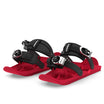
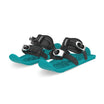












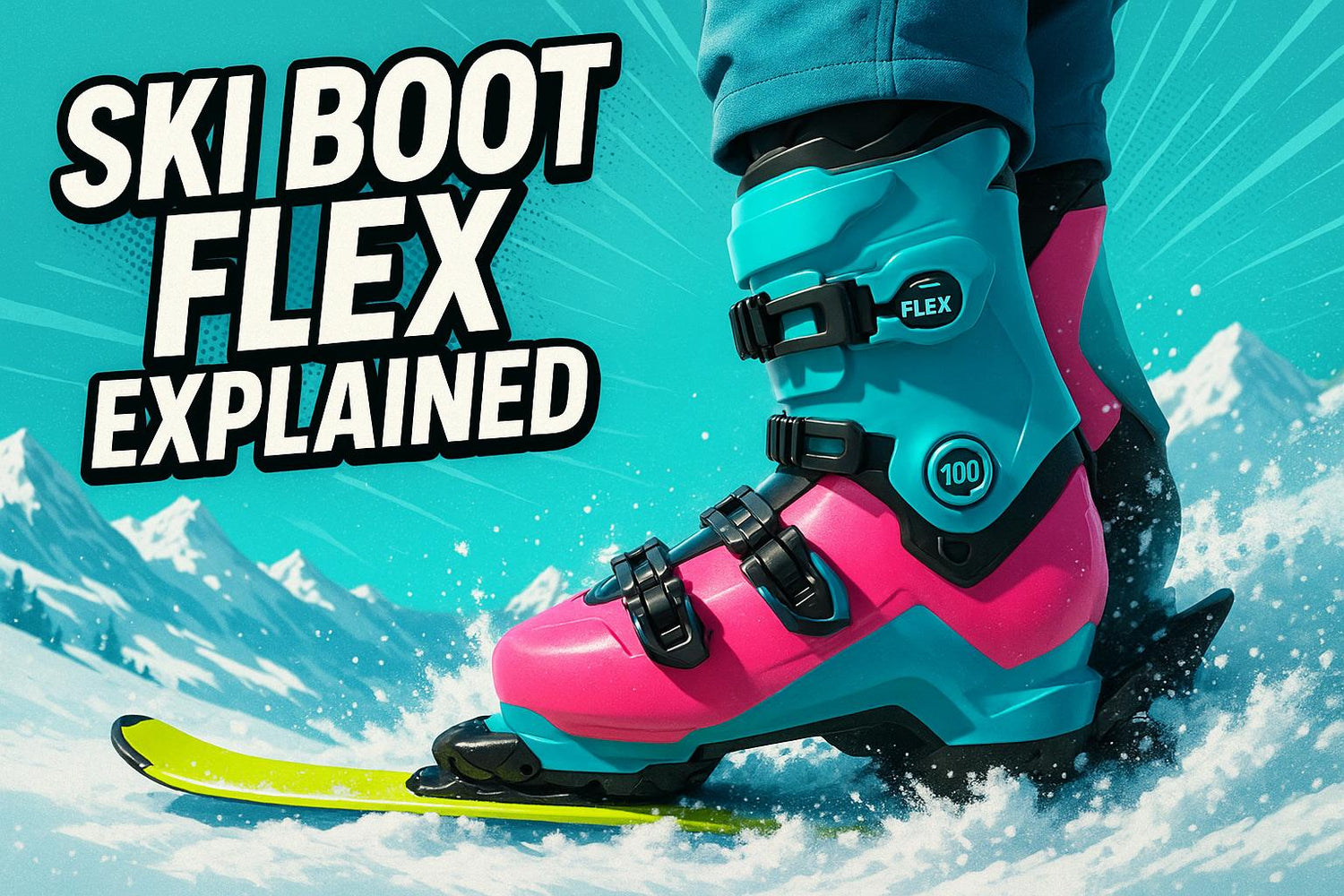
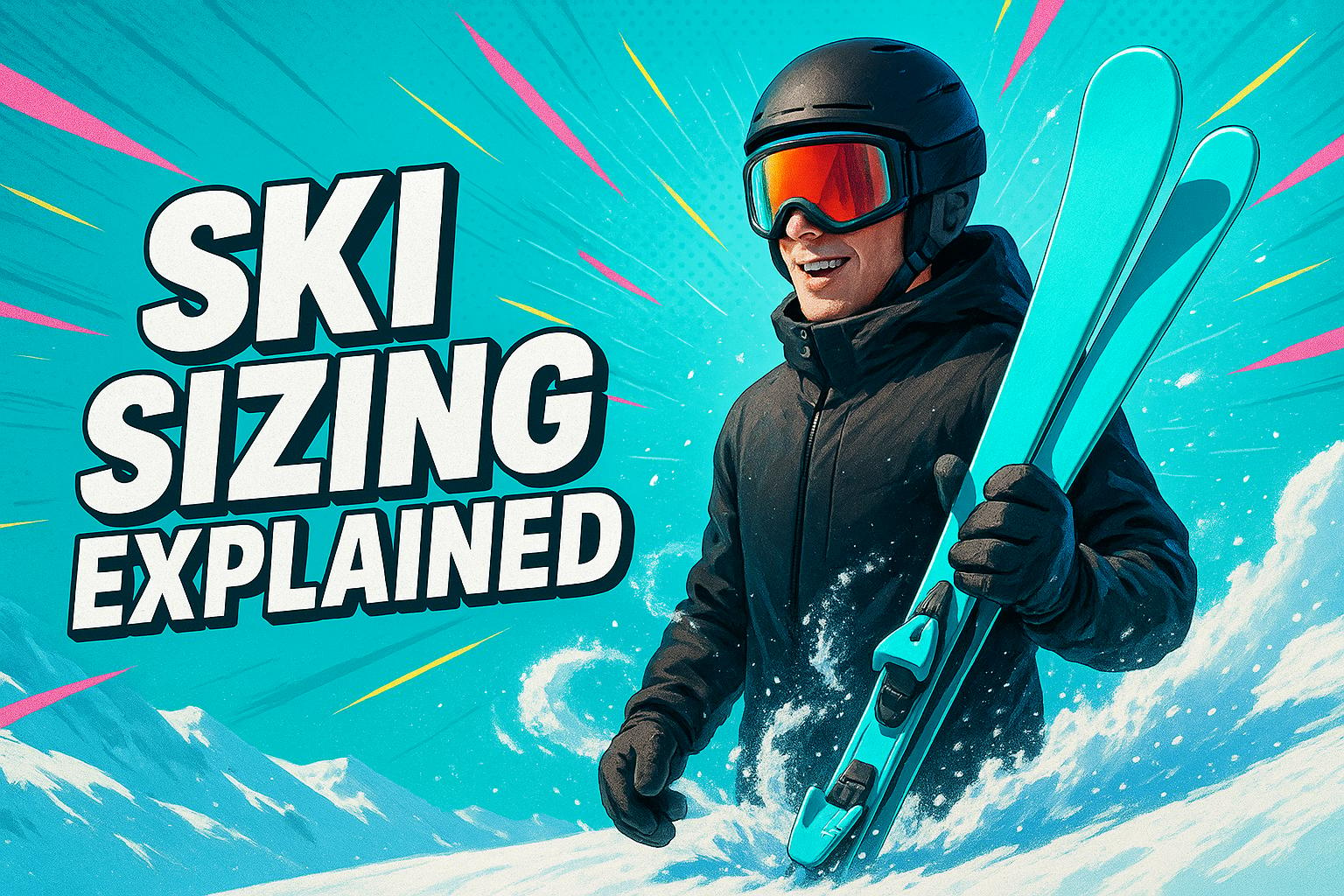
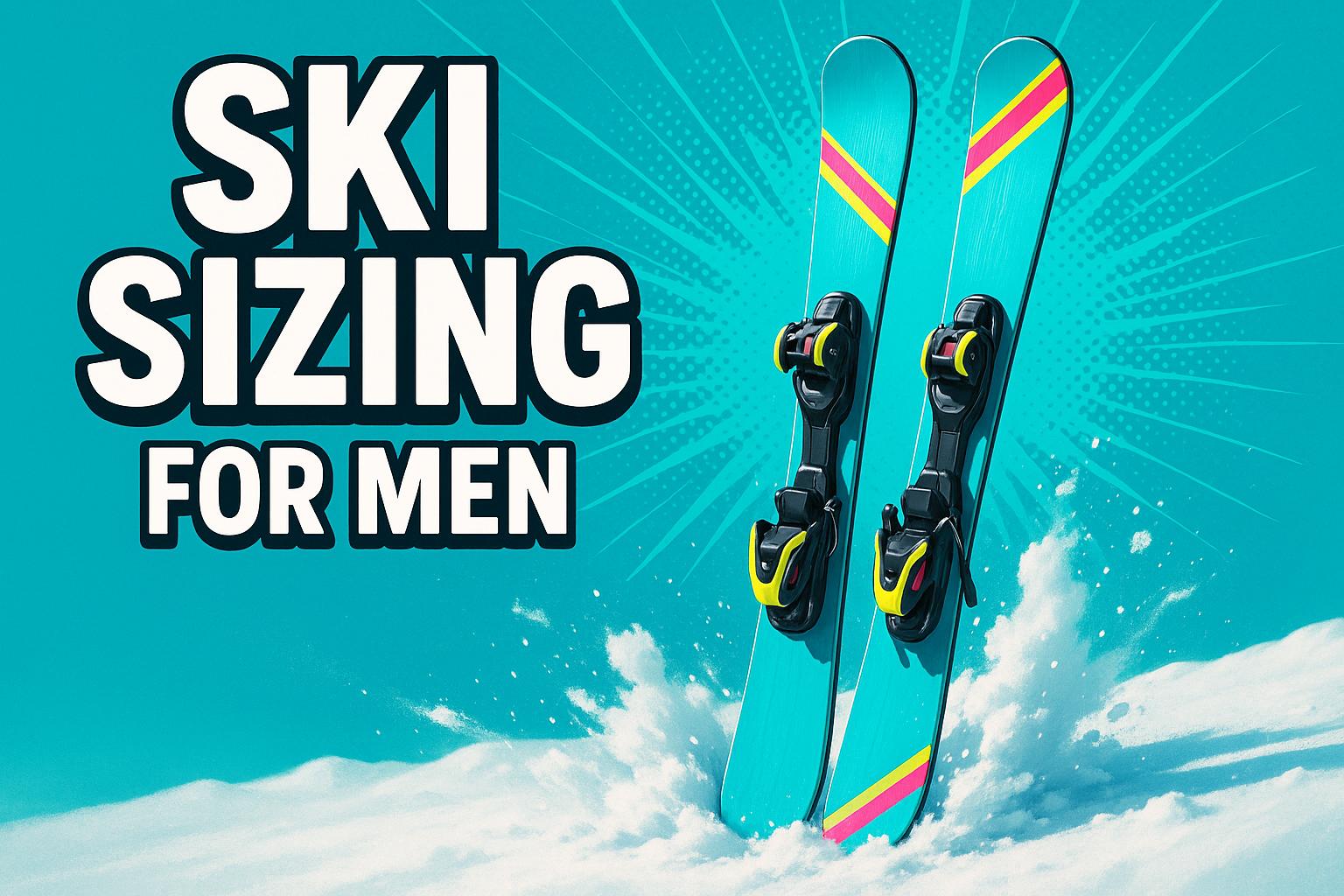




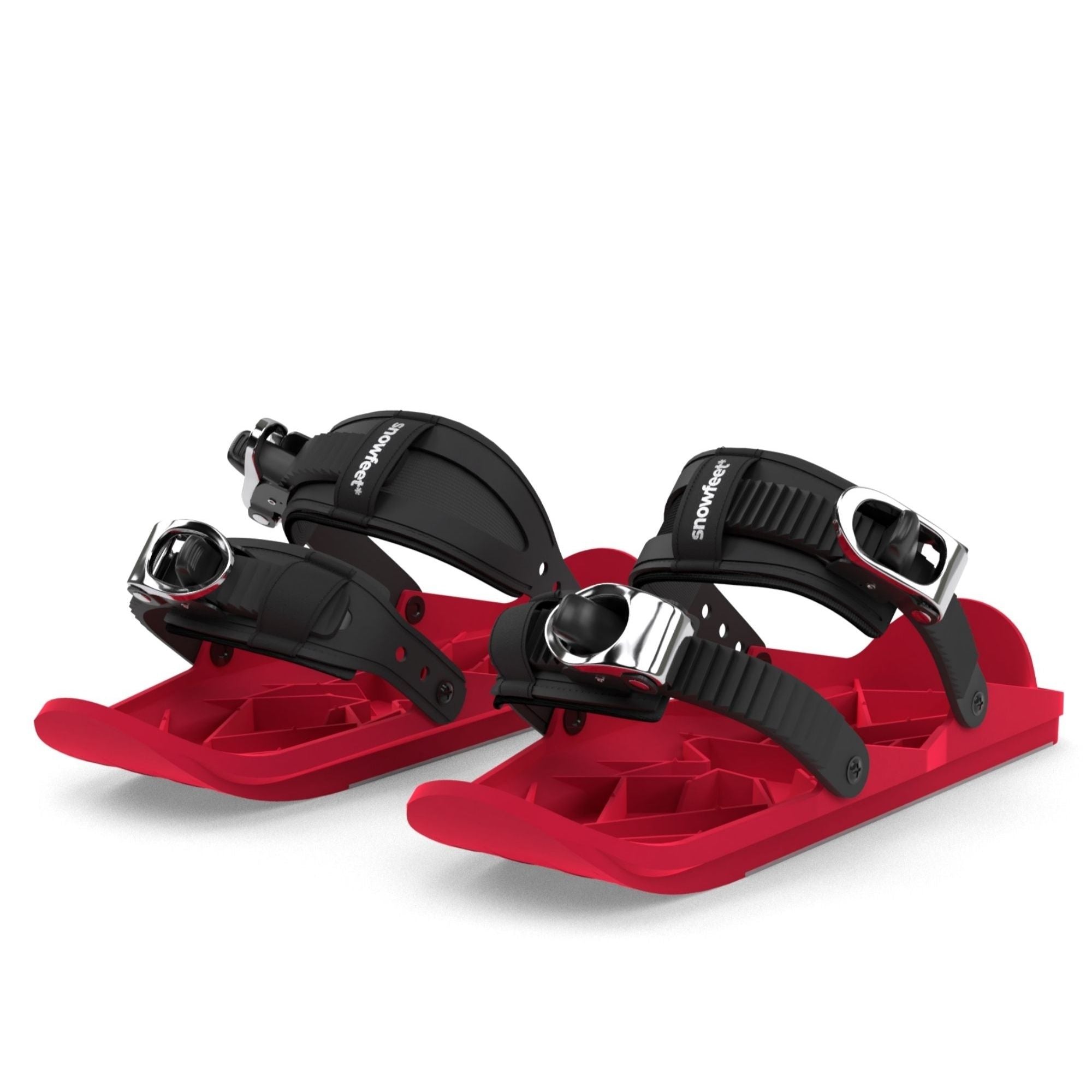
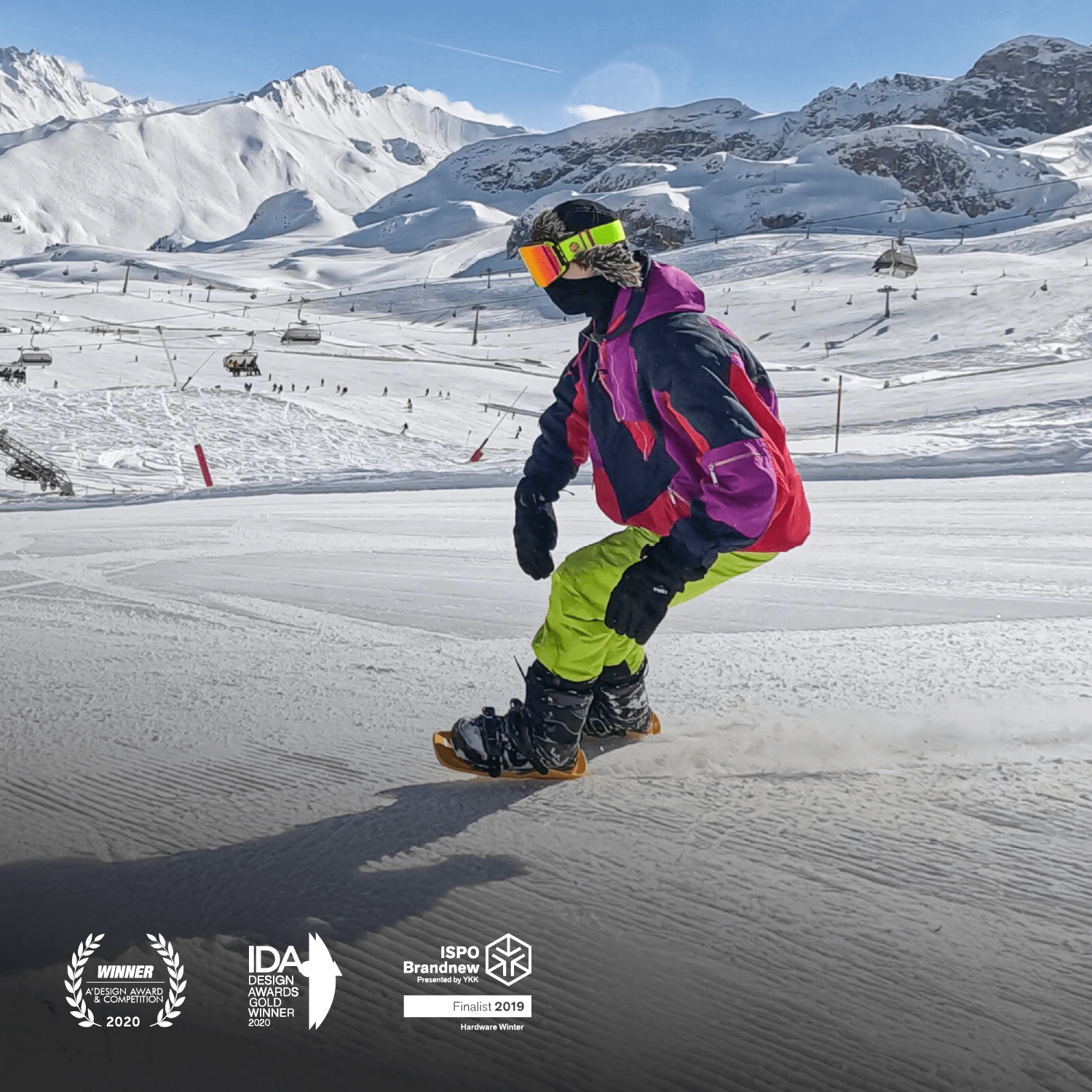




Laat een reactie achter
Deze site wordt beschermd door hCaptcha en het privacybeleid en de servicevoorwaarden van hCaptcha zijn van toepassing.